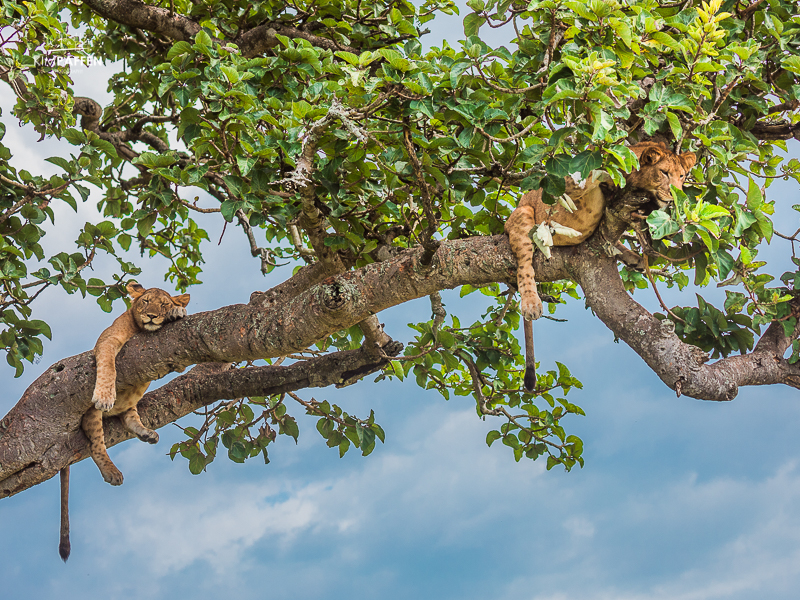In the heart of western Uganda lies Queen Elizabeth National Park, a wildlife haven renowned for its breathtaking landscapes and remarkable biodiversity. Among its many wonders, the park boasts one of nature’s rarest phenomena: tree-climbing lions. These magnificent big cats defy typical lion behavior, spending their afternoons lounging gracefully in the branches of ancient fig and acacia trees—a sight that captivates visitors from around the world.
Found predominantly in the Ishasha sector of the park, these lions are a unique and mysterious spectacle. Researchers suggest several reasons for their unusual behavior. Some believe the lions climb to escape the heat of the savannah, taking advantage of the cool breezes that sweep through the treetops. Others speculate that climbing offers a strategic vantage point to survey the landscape for prey or evade biting insects on the ground.
Observing these regal creatures resting against tree limbs, their muscular forms blending with the rugged bark, is an unforgettable experience. Against the backdrop of golden grasslands and the distant Rwenzori Mountains, this rare phenomenon feels like stepping into a wildlife documentary.
Beyond the lions, the Ishasha sector is home to a variety of other wildlife, including herds of buffalo, antelope, and elephants. Bird enthusiasts can revel in spotting species like the shoebill stork and African fish eagle. A game drive through Ishasha offers a sense of tranquility and exclusivity, as it is one of the quieter parts of the park, allowing for an intimate safari experience.
For accommodation, visitors can choose from cozy safari lodges or luxury tents, many of which offer panoramic views of the savannah. Guided game drives, led by expert rangers, ensure that visitors have the best chances of spotting the elusive tree-climbing lions while learning about the delicate ecosystem they inhabit.
A visit to see the tree-climbing lions is not just about witnessing a rare natural wonder—it is about connecting with the raw beauty and mystery of the African wilderness. In Queen Elizabeth National Park, the wild comes alive, offering moments that remain etched in the hearts of all who visit.




